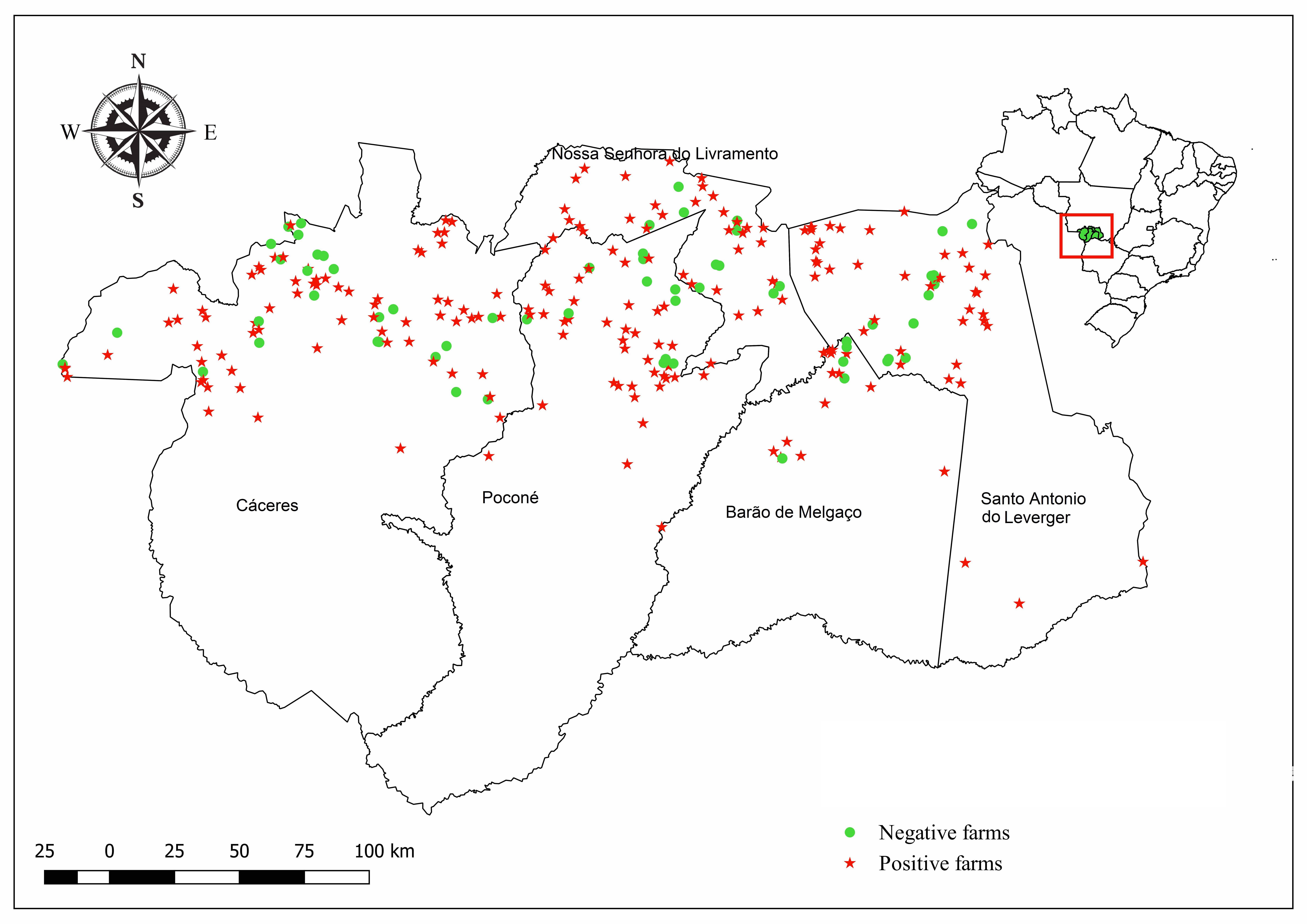Abstract
Neosporosis is caused by an obligate intracellular protozoan, Neospora caninum . It is considered one of the most widespread and frequent causes of abortion in cattle worldwide. To evaluate the prevalence of anti-N. caninum antibodies and associated risk factors, serum samples were collected from 2,452 bovines at 262 farms in the northern Pantanal, state of Mato Grosso, Brazil. Each farmer was asked to fill out a questionnaire for subsequent epidemiological data analysis. Anti-N. caninum antibodies were detected by means of the indirect immunofluorescent assay (IFA), using a cut-off dilution of 1:100. The overall anti-N. caninum antibodies prevalence was 25.44% (Confidence Interval - CI 95%; 20.10%; 30.78%), and the anti-N. caninum antibodies prevalence per herd was 76.72% (CI 95%; 71.60%; 81.84%). The presence of dogs, occurrence of abortion in cows, and sale of cattle for breeding were statistically associated with seropositivity in herds, while the risk of females being seropositive for N. caninum was higher in animals ≤ 6-years-old and in the presence of dogs. A spatial analysis indicated that the relative risk of the disease is spatially constant and that the farms with the highest prevalence of anti-N. caninum antibodies are located south of the region under study.
Keywords:
Neosporosis; antibodies; epidemiology; indirect immunofluorescent assay

 Thumbnail
Thumbnail
 Thumbnail
Thumbnail
 Thumbnail
Thumbnail
 Thumbnail
Thumbnail



